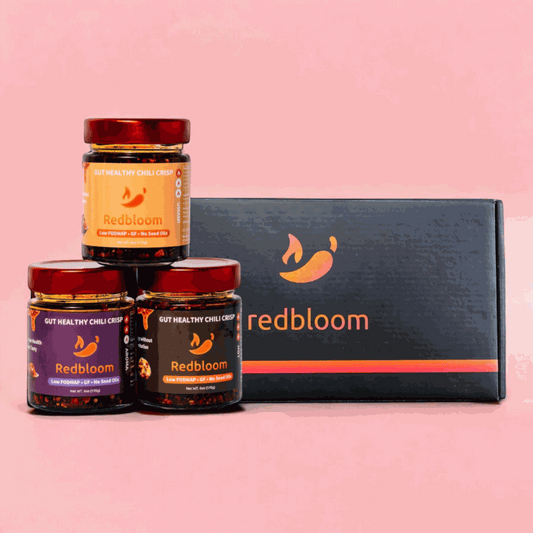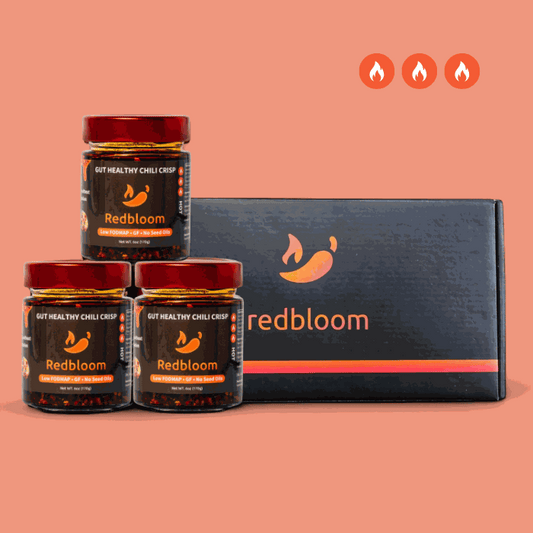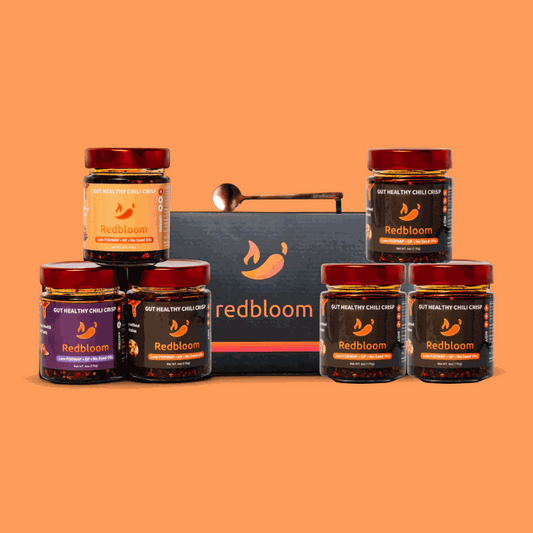Introduction
Have you ever wondered why some people can scarf down spicy ramen without a problem, while others experience cramps, urgency, or gut pain after just a sprinkle of chili crisp? The answer may lie in a condition called visceral hypersensitivity—a heightened sensitivity to normal gut stimuli.
This concept is especially relevant for people with IBS (Irritable Bowel Syndrome) and sensitive stomachs. It’s not just in your head—your gut nerves are actually sending amplified pain signals to your brain. And when capsaicin, the active compound in chili peppers, enters the picture, those nerves can go haywire.
In this article, we’ll explain what visceral hypersensitivity is, how it impacts digestion, and why spicy foods are common triggers. We’ll also explore the science behind capsaicin and TRPV1 receptor activation, and offer strategies to help manage flare-ups without giving up your favorite heat-packed meals.
What Is Visceral Hypersensitivity?
Visceral hypersensitivity refers to an increased sensitivity to sensations from internal organs, particularly the gastrointestinal tract. For people with IBS, even normal gut activities—like gas buildup, mild distension, or gentle contractions—can be experienced as painful, urgent, or extremely uncomfortable [1][2][3][4].
Unlike structural problems (like ulcers), visceral hypersensitivity is a functional disorder. The gut looks normal under a microscope, but the nerves behave differently—more reactively, more intensely.
Why Is It Common in IBS?
Studies show that up to two-thirds of IBS patients have some degree of visceral hypersensitivity, making it a core symptom of the condition [1][4].
Lower Pain Threshold
People with visceral hypersensitivity have a much lower pain threshold for gut stimuli. What feels like a mild rumble to someone else might register as severe bloating, pain, or urgency for someone with IBS [2][5].
Nerve Overactivity
These patients have hyper-responsive sensory nerves in the gut, which fire pain signals in response to minor events—like the presence of food, stool, or even air [1][3][6].
Peripheral and Central Sensitization
There are two layers to this:
-
Peripheral sensitization: The nerves in the gut become more easily triggered
-
Central sensitization: The brain’s interpretation of these signals is amplified, creating a feedback loop of discomfort [4][6][7]
Factors like stress, anxiety, inflammation, or previous infections can worsen this hypersensitivity.
How Spicy Foods Affect Visceral Hypersensitivity
Capsaicin and TRPV1 Receptors
Capsaicin, the fiery compound in chili peppers, activates TRPV1 receptors on sensory nerves. These receptors are found throughout the digestive tract and respond to heat, acid, and chemical irritation [2][6].
In people with visceral hypersensitivity:
-
TRPV1 receptors are more abundant or more active
-
Even small amounts of capsaicin can trigger exaggerated nerve firing
-
This results in gut burning, cramping, and urgency, sometimes within minutes of eating spicy food [2][3][6]
Exaggerated Reactions
While most people might feel a slight burn or loosened stool after very spicy food, someone with visceral hypersensitivity may suffer:
-
Intense abdominal pain
-
Sharp cramps or spasms
-
Diarrhea or urgency
-
Fatigue or post-meal anxiety [1][2][3]
This difference is not imagined—it’s neurochemical.
Inflammatory and Immune Contributions
Research also points to low-grade inflammation, gut permeability issues, and immune cell activation (especially mast cells) as factors that amplify nerve sensitivity in IBS [4]. These biological processes make the gut even more reactive to capsaicin and other triggers.
Summary Table: Visceral Hypersensitivity and Spicy Food
| Feature | Effect in IBS Patients with Visceral Hypersensitivity |
|---|---|
| Pain threshold | Lowered—minor gut activity causes intense discomfort |
| Response to spicy food | Amplified burning, cramping, urgency, or diarrhea |
| Underlying mechanisms | Nerve hypersensitivity, altered brain-gut signaling, inflammation |
| Role of capsaicin (spice) | Activates TRPV1 receptors, intensifies pain and urgency |
How to Manage Spicy Food Reactions with Visceral Hypersensitivity
1. Limit Raw and Vinegar-Based Spice
Raw chilies and vinegar-based hot sauces deliver a fast, harsh hit of capsaicin. These can sharply activate TRPV1 receptors.
2. Use Oil-Based Infusions
Capsaicin is fat-soluble, so using chili in oil-based forms (like chili crisp or infused oils) allows slower absorption and reduces sharp stimulation.
3. Control Portions
Even spicy food lovers with sensitive stomachs can enjoy flavor by keeping doses low. Start with 1/4 tsp of chili oil mixed into starchy foods and increase slowly.
4. Pair with Soothing Foods
Balance spice with:
-
Starches (rice, potatoes, oats)
-
Cooling ingredients (yogurt, cucumber, mint)
-
Low-FODMAP veggies and herbs
5. Use Capsaicin Microdosing to Desensitize
Some studies suggest that daily low-dose capsaicin exposure may reduce sensitivity over time by desensitizing TRPV1 receptors. However, this must be done carefully, and only during stable periods—not flare-ups [6].
6. Address Stress and Gut-Brain Feedback
Since central sensitization plays a role, reducing stress, practicing mindfulness, or using gut-directed hypnotherapy can significantly improve gut responses over time.
FAQs
1. What’s the difference between visceral hypersensitivity and regular IBS?
Visceral hypersensitivity is a key mechanism within IBS—it causes many of the symptoms like bloating, pain, and urgency [1][4].
2. Why does my stomach burn after mild spice?
Because TRPV1 receptors are more sensitive, even moderate spice can trigger intense nerve responses [2][3].
3. Can I still eat spicy food with visceral hypersensitivity?
Yes, but choose oil-based, low-dose formats, and monitor your reaction carefully. Microdosing may help long-term.
4. Is this a sign of inflammation or damage?
Not necessarily. Visceral hypersensitivity often occurs without visible inflammation, though mild immune activity may contribute [4].
5. Can this sensitivity go away?
For some, symptoms improve with diet, stress reduction, and desensitization strategies. Others may need long-term management.
Conclusion
Visceral hypersensitivity helps explain why spicy food is a pleasure for some and a nightmare for others. It’s not about spice being “bad”—it’s about how your gut nerves are wired to respond.
By understanding the role of TRPV1 receptors, capsaicin, and brain-gut signaling, you can make smarter food choices that protect your comfort without giving up flavor. Spice doesn’t have to be your enemy—just handle it with care.
Citations
-
https://www.monashfodmap.com/blog/gut-hypersensitivity-and-ibs/
-
https://www.gastrolondon.co.uk/ibs-treatments/treatment-for-visceral-hypersensitivity-in-ibs/
-
https://www.ageb.be/Articles/Volume%2079%20(2016)/Fasc1/06-Deiteren_et_al.pdf
-
https://www.jnmjournal.org/journal/view.html?doi=10.5056%2Fjnm16001
-
https://www.jnmjournal.org/journal/view.html?doi=10.5056%2Fjnm17137





